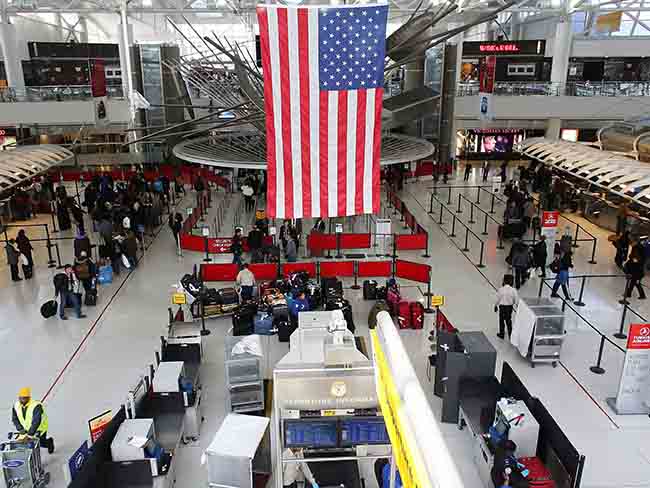Republished with permission from newyorkcriminalattorneyblog.com
New York gun crimes law firm Tilem & Associates is pleased to announce another victory in a firearms related case, winning a full dismissal of all charges after a person was charged with possessing handgun ammunition and a handgun magazine at JFK airport. As reported almost six years ago in our blog about New York City’s ban on commonly possessed items, possession of handgun ammunition and ammunition feeding devices are illegal in the five boroughs of New York City under New York City Administrative Code Section 10-131. That section makes it a misdemeanor, to possess these items punishable by up to one year in jail . . .
The difficulty with section §10-131 is that it is very long, containing a large number of subdivisions, poorly written and has a large number of exceptions written into the statute. §10-131 subdivision (i)(3) states in pertinent part: “It shall be unlawful for any person not authorized to possess a pistol or revolver within the city of New York to possess pistol or revolver ammunition, provided that a dealer in rifles and shotguns may possess such ammunition.”
In the case at JFK airport, the police officer in the accusatory instrument alleged only, in pertinent part that “. . . at Terminal 5 – JFKIA main screening Lane 13, suspect was in possession of two magazines holding six rounds of 9mm ammunition in each.” Yet, it is a well settled principle of New York law that where an exception is contained within a statute the prosecutor or the police are required to disprove the exception. In this case for example the police would have been obligated as a matter of law to establish that the accused was not a dealer in rifles and shotguns. Since the police failed to make that accusation, the accusatory instrument was insufficient as a matter of law and needed to be dismissed.
This situation is different than, for example, than illegal possession of a firearm. Those statutes do not contain any exceptions for a person who possesses a license or for a police officer. Rather, those are exemptions found in a different section and therefore do not need to be pleaded and proved by the police or prosecutor.
A similar argument was made for the separate charge of possessing an ammunition feeding device. That section includes a large number of exceptions including the fact that the defendant was not a licensee or permittee authorized to possess a pistol that accepted the ammunition feeding devices.
The New York Criminal Procedure Law requires that all local court accusatory instruments be sufficient on the face of the instrument and requires dismissal of instruments that are not sufficient on their face under most circumstances. Here the police officer drafting the instrument failed to establish that the exceptions did not apply but also failed to establish other elements of the offense.
Quoting the deficiencies in the ammunition feeding device charge from the motion to dismiss: “1. That the defendant possessed a “ammunition feeding device”; 2. that it was “designed for use in a firearm”; 3. that the defendant was not a “pistol or revolver licensee or permittee”; 4. that the defendant was not licensed to possess a pistol that accepted that ammunition feeding device”; 5. that the device was capable of holding more than 17 rounds; and 6. that the device extended below the grip.”
Quoting the deficiencies in the ammunition charge from the motion to dismiss: “1. That defendant possessed pistol or revolver ammunition; 2. That Defendant was not authorized to possess a pistol or revolver; 3. That defendant was not a dealer in rifles and shotguns.”
The bottom line is read the accusations in the accusatory instruments carefully. Read the statutes carefully. As a result of good lawyering and bad drafting by the police, the accused was completely vindicated and justice was served.





The legal victim may have beat the rap but the law is an infringement and capricious in outlawing objects that by themselves can hurt no one. You can’t throw the magazines or bullets fast enough.
The ghost gun can empty a 30-magazine clip in half a second.
But only if it has the barrel shroud and the shoulder thingy that goes up.
And is also black, because black is scary.
Justice would have been served if the law had been declared unconstitutional under amendments 2 and 14, the cost of all lawyering was paid by the state, and the police officer had been reprimanded and a new policy taught to all NYC police officer. Then punitive damages would have been found to the tune of $100,000.
I would call that justice.
Here, the legal damages to the victim were limited, but they still suffered great expense and difficulty.
+1000! Mr. Weingarten … well stated.
(Flag is displayed backwards.)
Wouldn’t that depend on which side of it you happened to be standing?
And for 6 years this simple result eluded NY’s “justice” system? I mean, really, SIX years?
Winning on a legal technicality (poorly written charging document) does nothing to advance constitutional principles, or to roll back New York state’s obvious and egregious violation of citizens’ natural, God-given, and constitutionally protected rights.
When someone gets the NY Court of Appeals to declare that the municipal ordinance is pre-empted by the FOPA, then that will be a victory. Now I realize that FOPA was not applicable here–it seems he was in the security screening line and did not have this stuff stored in his luggage–but that would be a great victory.
Comments are closed.